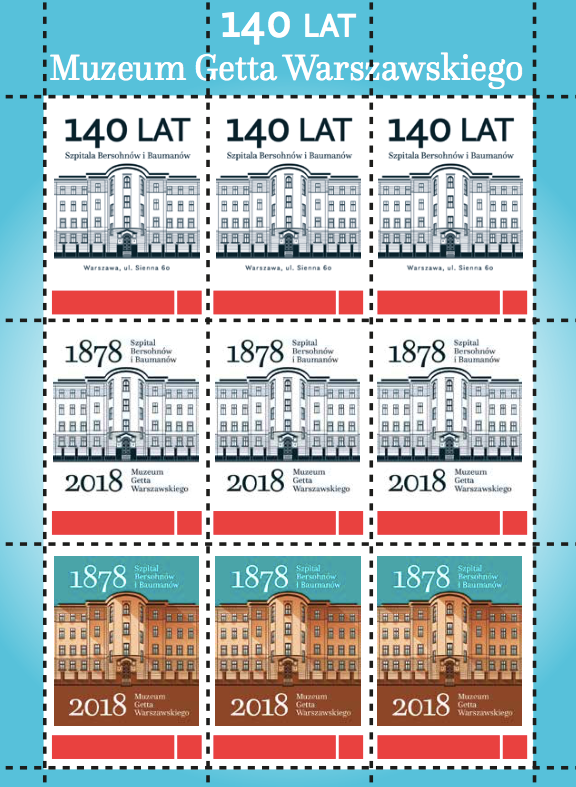The museum publishes a commemorative postage stamp.
The museum publishes a commemorative postage stamp.
The stamp – its idea conceived by the Warsaw Ghetto Museum director Albert Stankowski – was designed by a noted graphic designer Andrzej Wąsik. A souvenir stamp sheet was published under Polish Post’s “My Stamp” paid service. Each imprint block includes the commemorative stamp in three versions, including two monochrome and one polychrome design renditions. Each non-denominated stamp corresponds to A-class economy mail rate, for up to 350 gram parcels (currently at PLN 2.60).
The children’s hospital situated between Śliska and Sienna streets was built in 1876-1878 through the efforts of two illustrious families of Warsaw’s Jewish industrialists and philanthropists: Bersohn and Bauman. The original single storey classical building designed by Artur Goebel, with ingress from Śliska Street, stood out against the adjacent eclectic tenements with its well-balanced form.

Initially offering 24 beds, the hospital accepted patients regardless of their religion.
Between 1927 and 1930, the building was expanded according to a design by Henryk Stifelman, an architect associated with the Warsaw Jewish Community. Stifelman added one more storey, a semi-circular avant-corps off Śliska Street, and a large terrace for young pulmonary-disease patients off Sienna Street. It became one of the most modern medical facilities in Poland.
In November 1940, the hospital found itself in the “Small Ghetto” area and operated until the Great Deportation of 1942. During the Warsaw Uprising, the building served as a field hospital for the Home Army’s local combat formation Chrobry II.
Many eminent doctors worked in the hospital, among them Henryk Goldszmidt (“Janusz Korczak”), employed there in the years 1905-1912. The post of the hospital’s chief physician was held respectively by: Ludwik Chwat (1878-1881), Szymon Portner (1881-1910), Adolf Poznański (1911-1923), and Anna Braude-Hellerowa (1930-1942). In the course of the Second World War, Marek Edelman worked there as a hospital courier.
After the war, the historical building continued to serve as a hospital, and until recently housed a children’s infectious diseases ward.
It is there that the Warsaw Ghetto Museum will open its permanent exhibition on the 80th Anniversary of the Warsaw Ghetto Uprising in 2023. AJE SŁU

